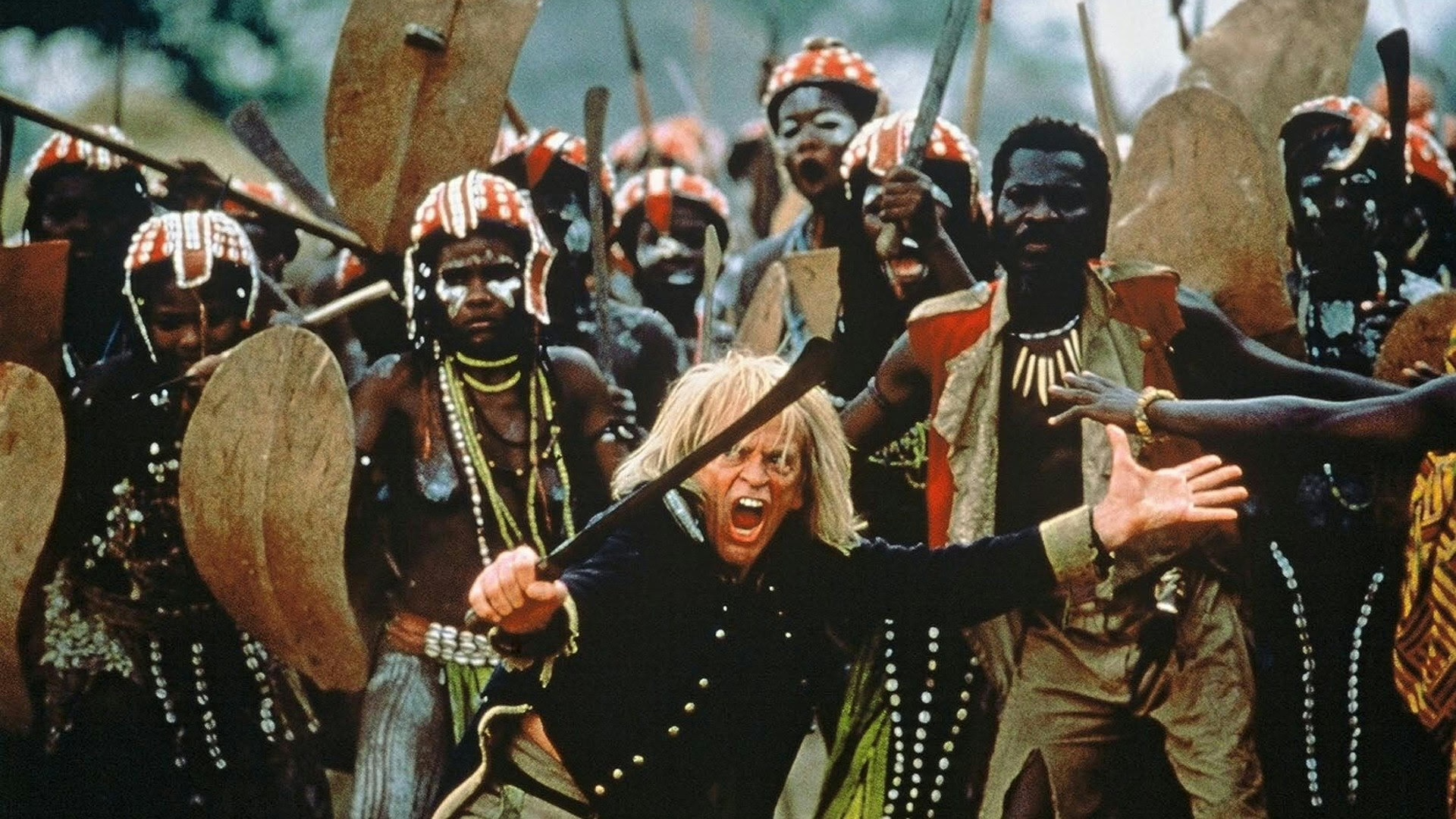Werner Herzog | 1hr 51min
This review was requested by Harry, who shared the following thoughts:
“A gorgeous huge scale epic wrapped up in just 110 minutes. The haunting score done by Popul Vuh also assists the film greatly. Many interesting sets and compositions with the insanity of a Kinski lead performance on top.”

Before Francisco Manoel da Silva finds his despicable calling in the slave trade, he wanders Brazil’s desolate hinterlands as a hardened, notorious outlaw. Cheated out of his wages with a gold mining company, he kills the boss, runs away, and begins robbing stagecoaches, taking the name Cobra Verde as his venomous moniker. Even in disguise, his menacing gaze and threatening words are enough to send an escaped slave scrambling back to his chains, impressing sugar baron Dom Octávio Coutinho who sees an opportunity to hire him on his own plantation. After impregnating each of Dom’s three daughters though and raising his ire, Francisco is sent away on a new, frighteningly dangerous mission – to reopen the slave trade in Western Africa.
Of course, Klaus Kinski is no stranger to playing characters who confront near-impossible objectives with stubborn, manic ambition, particularly under Werner Herzog’s direction. Cobra Verde was the final collaboration between these two icons of New German Cinema, pushing their tense relationship to a breaking point when Kinski’s irritable temper turned physically violent. He was a “monster and a great pestilence” according to Herzog, yet at the same time, his explosive embodiment of this ruthless, unhinged predator is undeniably haunting. Drawn from the novel ‘The Viceroy of Ouidah’, which itself is loosely based on the life of historic slave trader Francisco Félix de Souza, Herzog thus anchors this grotesque nightmare in the brutal realities of 19th century imperialism, exposing the barbaric machinery of a regime sustained by forced labour.

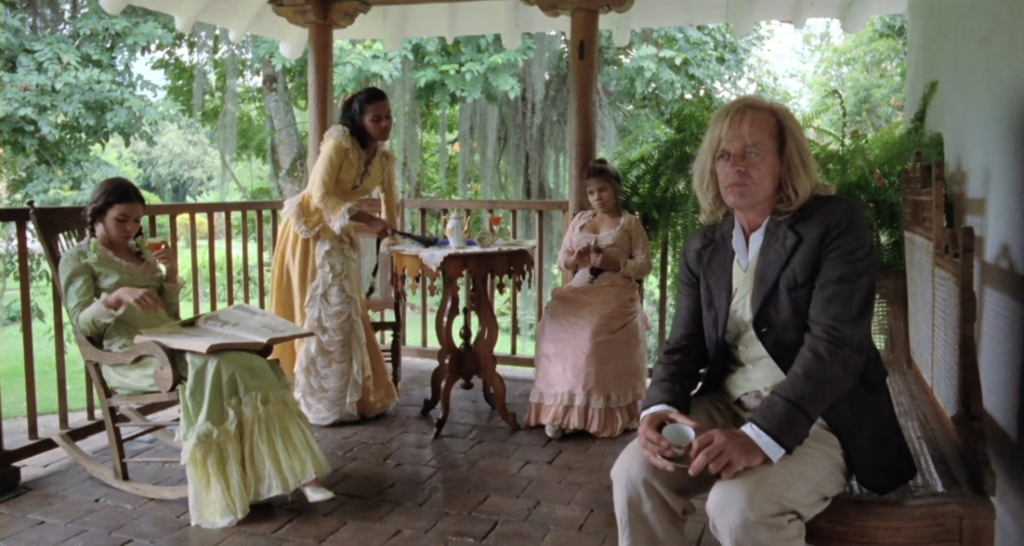
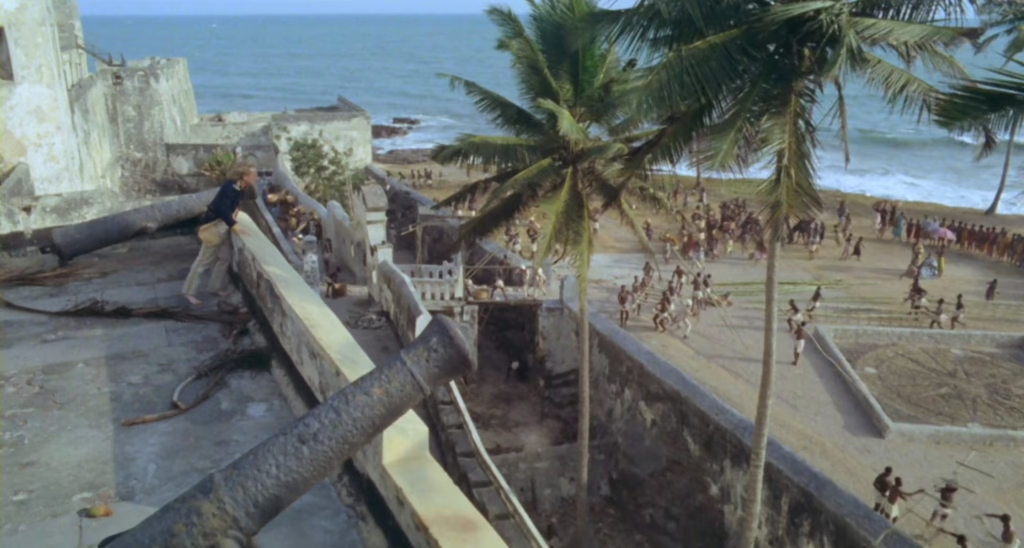
Where Herzog’s location shooting in the Amazon rainforest once amplified the madness of Aguirre, the Wrath of God and Fitzcarraldo, here it sprawls across Ghana, Brazil, and Colombia, traversing the scorched, blood-soaked terrains of colonial greed. The first shot which properly introduces these forbidding landscapes starts with an extreme close-up of Kinski’s miserable, droopy eyes, before zooming out to reveal him kneeling by his mother’s grave, and panning a full 360-degrees around an arid desert of cracked earth and calcified animal bones. Francisco’s origins are bleak, yet even after he crosses the ocean to the Kingdom of Dahomey, Herzog continues to sculpt natural visions of humanity’s ruin. There, Elmina Castle becomes Francisco’s dilapidated home, its decaying architecture perched on the Gold Coast’s rugged shoreline. This is not an environment which caters to foreigners, but with his stark pragmatism and dogged resourcefulness, the Brazilian bandit viciously bends hostile worlds to his will.

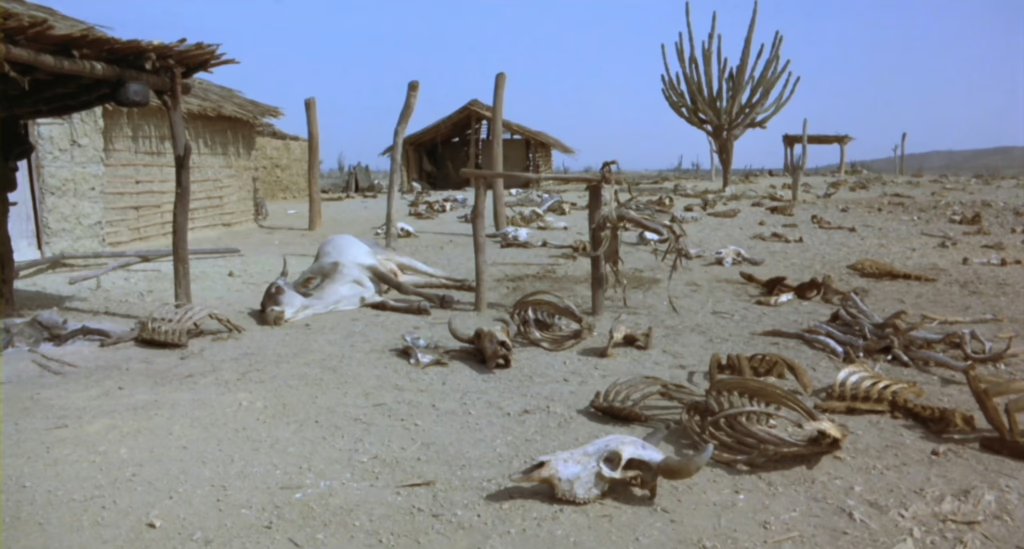
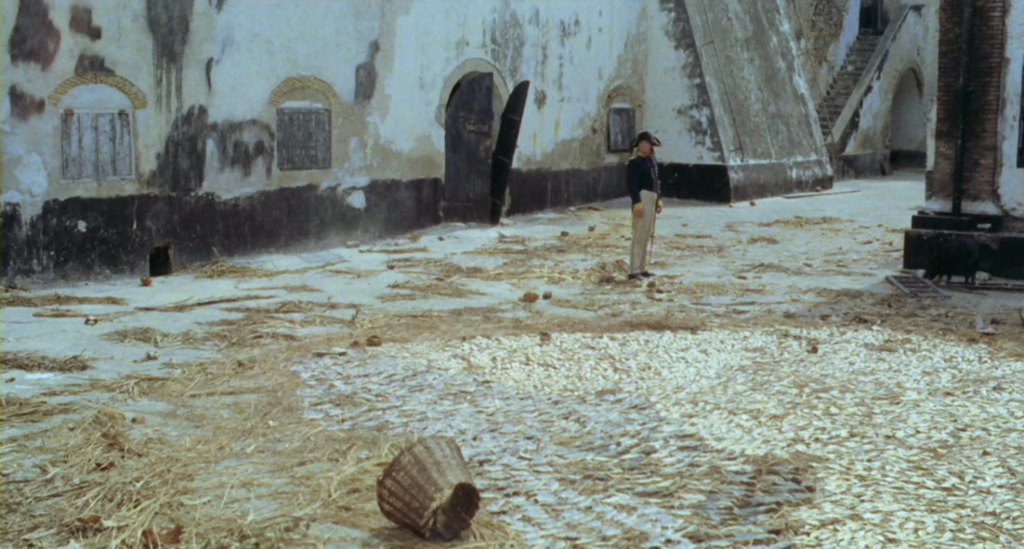
Upon arrival, King Bossa Ahadee of Dahomey appears to be the single greatest obstacle that Francisco must overcome to successfully revive Western Africa’s slave trade. This is a monarch whose madness eclipses even Francisco’s, ordering the execution of anyone who shares his name, publicly displaying his enemy’s mutilated corpses and ruling alongside the imaginary “Bush King.” When Francisco strikes a convenient deal in exchange for rifles, his caution proves justified, soon finding himself accused of fabricated crimes and sentenced to death. Fortunately, salvation is delivered by the defiant Prince Kankpe, who frees Francisco on the condition that he train the fearless native women to overthrow the despot and install him as King.
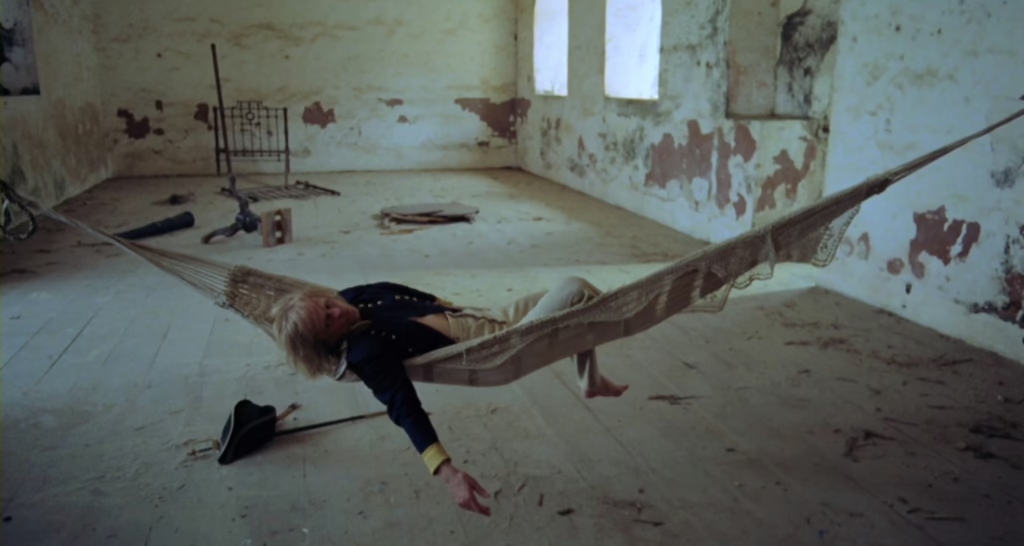
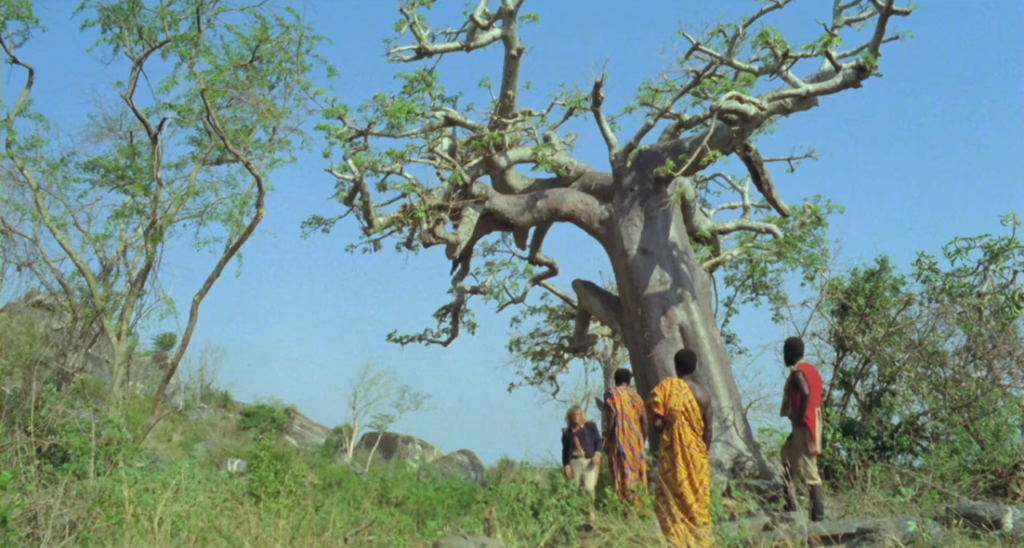
Whether Herzog’s high angles are capturing long lines of male slaves or bloodthirsty female armies, his sweeping compositions turns these masses into living landscapes, revealing the ambitious scope of Cobra Verde’s colonial epic. Amid the four hundred warriors who jab at each other with spears and deflect with shields, his handheld camera lunges into the chaotic fray alongside Francisco, who demonstrates how to wield a weapon with frantic shrieks and thrusts. Leading the charge outside the King’s walls, he thus ushers in a new reign with deranged ferocity, effectively shaping the future of Dahomey into yet another cycle of blood, betrayal, and slavery.
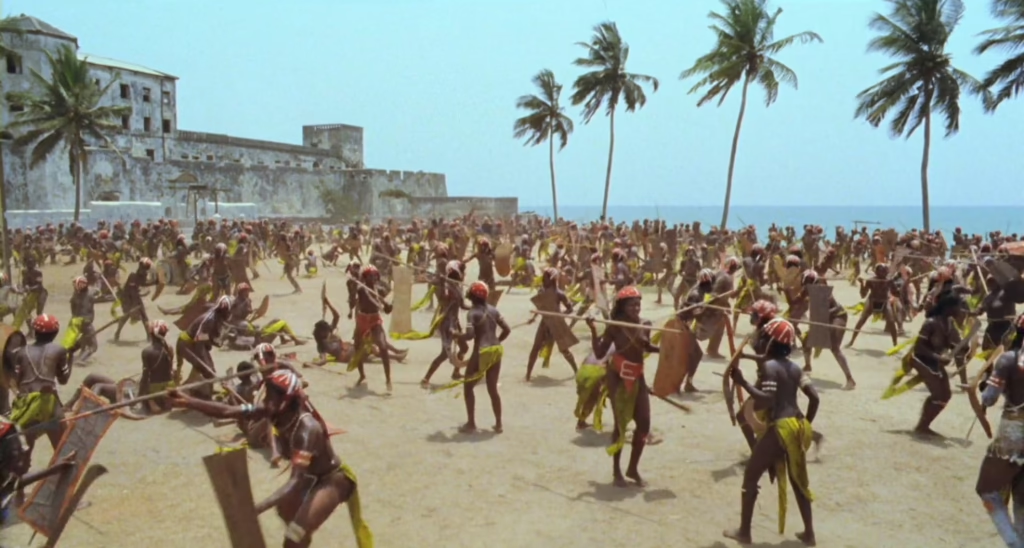
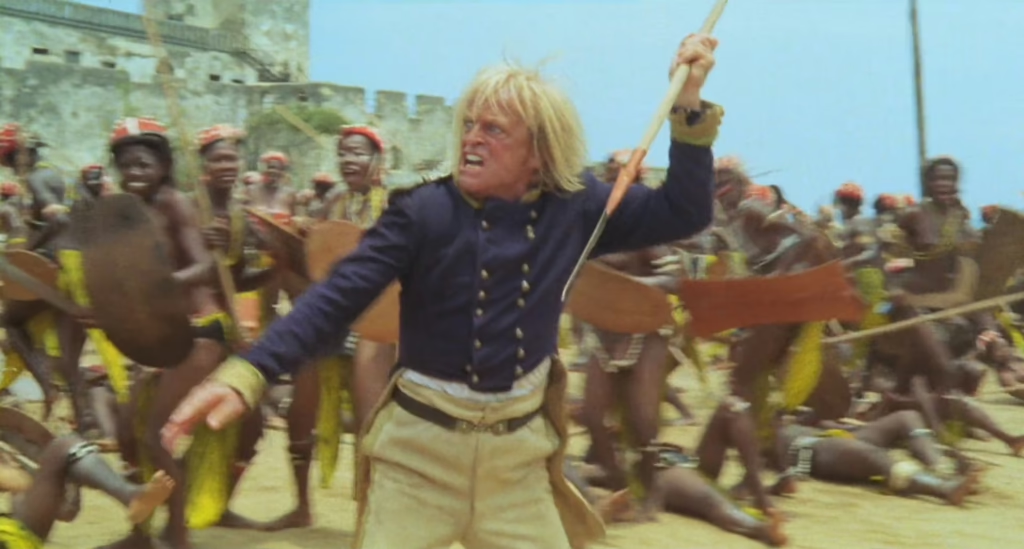
Even with this feverish display of dominance, the slave trader, military leader, and now father of sixty-two children does not find satisfaction in his conquest. “I cannot begin to describe this cretinous existence of mine. Nor how lonely it is to be without family or friends,” he writes in his diary, pondering the hollow grandeur of his triumphs. As the camera tracks backwards from Francisco sitting at the end of a long table, the emptiness of this large stone hall is revealed, thoroughly isolating him in one of his rare moments of quiet, existential reflection.
“I would live in the lands of ice and snow, anywhere to be away from here. The heat here is mean and inescapable. It courses through the bodies of the people like a fever, and yet my heart grows colder and colder.”
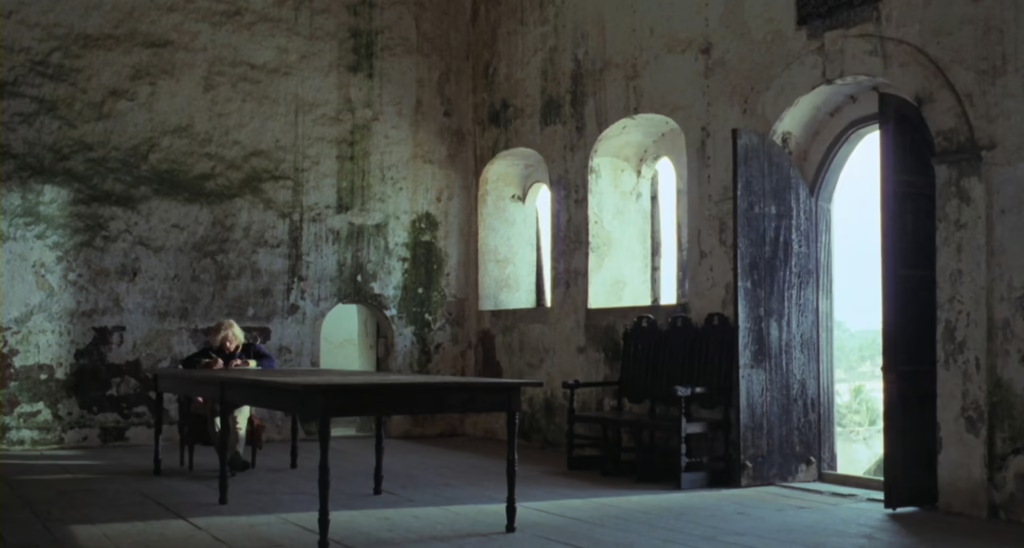
Of course, this is all a matter of perspective in Cobra Verde. Beyond its violent rituals of power, this culture he has invaded is a tapestry of vivid colours and communal rhythms, and one that he cannot fully inhabit. Bright palettes and bold, geometric patterns adorn its textiles, radiating liveliness in otherwise grim circumstances, while movement and music pulse through daily life. The dancing choir who joyfully perform to the camera is led by one girl in particular whose proud smile ignites the frame, and for some time, Herzog lets us linger in the hypnotic spectacle. Nevertheless, that vibrant harmony is eroded the moment Francisco awkwardly enters the shot, drifting among the topless women with a perverse, leering fixation. With his blonde hair like dry straw and pale blue eyes, he cuts a jarring contrast against the earth-toned bodies of those around him, constantly reminding us of his disruptive colonial presence.

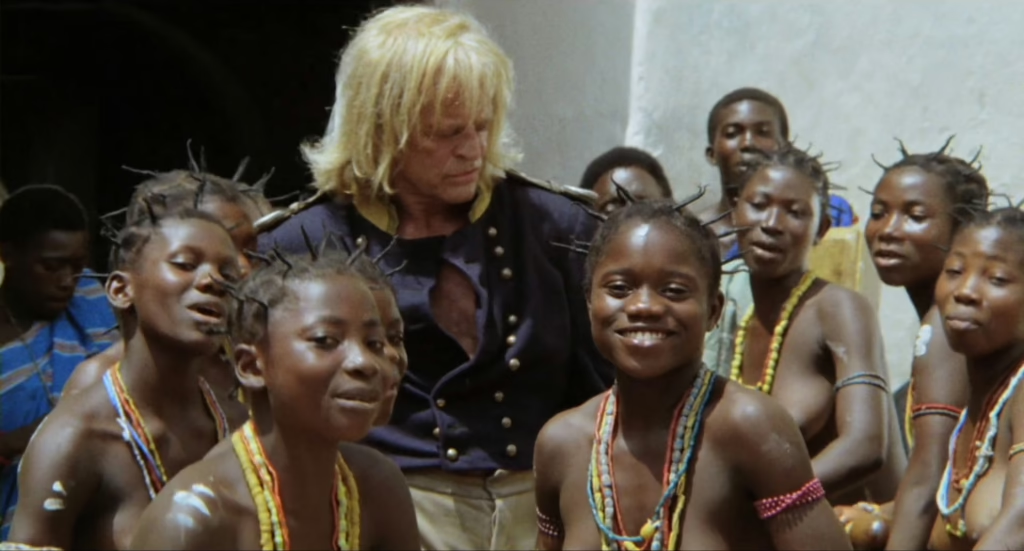
Slavery may persist beneath the newly instated King Kankpe’s rule, yet soon enough even he casts Francisco aside, expelling him from Elmina Castle. With the trade outlawed back home in Brazil, the British placing a price on his head, and his assets seized, the illusion of victory crumbles in his hands. “To slavery, the greatest misunderstanding in the history of mankind,” his associate Captain Fraternidade toasts, and although Francisco responds with apparent remorse, it is telling that this only comes after everything has slipped from his grasp.
“It was no misunderstanding. It was a crime.”

Slavery is an element of the human heart, he morbidly remarks, before toasting to their own ruin – and indeed, ruin is all that remains. There is no home on either side of the Atlantic Ocean for Francisco, and as he desperately strains and fails to pull his boat into the ocean, the camera holds on his lonely, futile struggle. In the distance too, a local man disabled by polio observes his senseless effort with detached curiosity, as if witnessing a creature hopelessly out of place. Cobra Verde may not be as tightly focused as Herzog’s grander masterpieces, yet as this icon of imperial power resigns to the rolling waves, it leaves us stranded in the same desolate, unforgiving void that consumes all empires built on the systemic commodification of suffering.
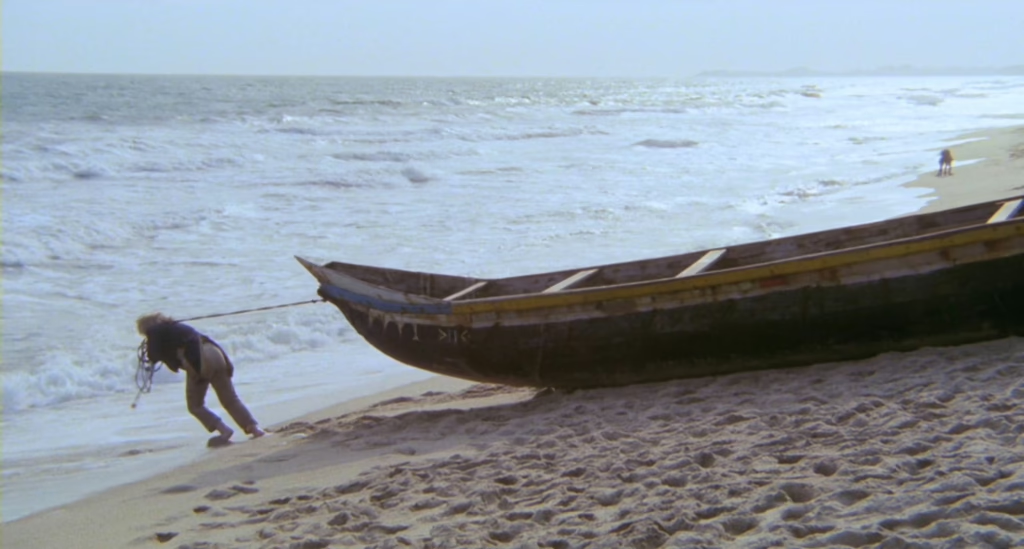
Cobra Verde is currently streaming on The Criterion Channel.
Have a film you’d like me to write about next? Request a review here.

